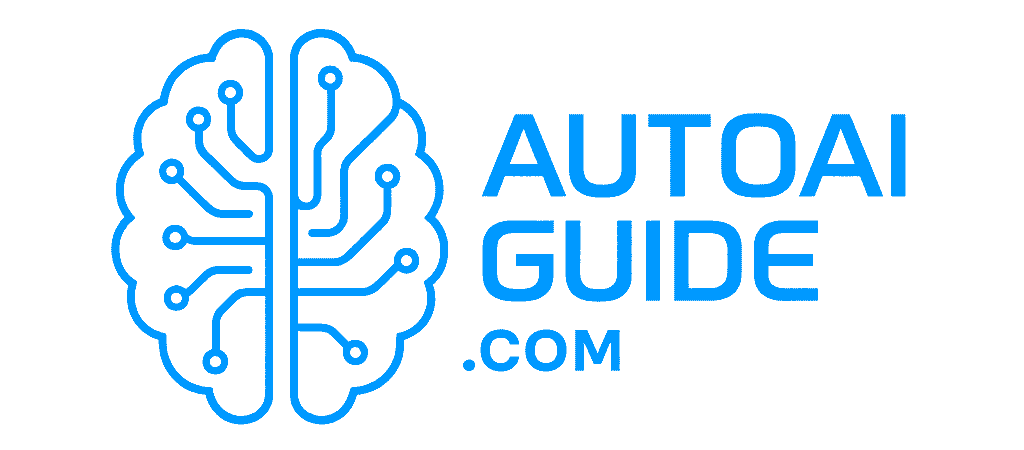The Great AI Workplace Shift: 80,000 Jobs Lost, Millions More at Stake in 2025

📋 What You’ll Learn
The Great AI Workplace Shift: 80,000 Jobs Lost, Millions More at Stake in 2025
The artificial intelligence transformation of the workplace isn’t coming—it’s here. As we reach the midpoint of 2025, over 80,000 technology workers have already lost their jobs in what industry experts are calling the most significant workforce disruption since the Industrial Revolution. But behind these stark numbers lies a complex story of technological advancement, policy upheaval, and economic transformation that will reshape how we work forever.
The Shocking Scale of AI’s Workplace Impact
The numbers tell a story that’s both alarming and unprecedented. Collectively, these announcements bring the total number of tech layoffs in 2025 to over 80,000, according to multiple industry trackers. That figure already matches or exceeds the full-year totals seen in 2023 and 2024, with the pace of restructuring showing no signs of slowing.
What makes this wave of layoffs different is the driving force behind them. Unlike previous downturns caused by economic uncertainty, According to the World Economic Forum’s 2025 Future of Jobs report, 41% of employers worldwide intend to reduce their workforce in the next five years due to AI automation.
“Anthropic CEO Dario Amodei’s stark prediction: AI could eliminate half of all entry-level white-collar jobs within five years. Most workers won’t recognize the danger until their jobs are gone.”
Inside the Corporate AI Transformation
The companies making headlines for layoffs aren’t struggling financially—they’re strategically reshaping their workforces for an AI-driven future. Microsoft has been at the center of this year’s layoff wave, letting go of nearly 6,000 employees in May, followed by another 9,000 in July—amounting to almost 4% of its global workforce.
The Microsoft Blueprint
Microsoft’s approach has become the template other companies are following. Microsoft confirmed plans to cut 9,000 roles, mainly in gaming and cloud, bringing total 2025 cuts to over 15,000. The move is part of a push to simplify operations and invest heavily in AI. Simultaneously, the company is committing $80 billion to AI investments, showing how resources are being redirected rather than eliminated.
| Company | Jobs Cut | AI Investment | Strategy | Impact |
|---|---|---|---|---|
| Microsoft | 15,000 | $80B | Gaming & Cloud Restructure | Revenue +13% |
| Intel | 10,000 | $25B | Manufacturing Focus | 20% Workforce Reduction |
| IBM | 8,000 | $15B | HR Automation | AI Handles 11.5M Interactions |
| Meta | 5,500 | $40B | Reality Labs Investment | Efficiency Focus |
Microsoft
Intel
IBM
Meta
The Hidden AI Replacement Strategy
What’s particularly striking is how companies are communicating these changes. For the most part, firms are still more likely to talk about job cuts in broad terms like restructuring, reorganization and optimization. But the layoffs may mask a larger role for artificial intelligence than companies are revealing.
Industry expert Candice Scarborough explains the strategy: “They align suspiciously well with the rollout of large AI systems. That suggests that jobs are being eliminated after AI tools are introduced, not before. Restructuring sounds proactive; business optimization sounds strategic; and a focus on cost structures feels impartial. But the result is often the same: displacement by software.”
Which Jobs Are Vanishing and Which Are Emerging
The AI workplace transformation isn’t affecting all roles equally. Some positions are being eliminated entirely, while others are being created at unprecedented speed.
Jobs Most at Risk
Software Engineering
HR & Administrative
Customer Service
Data Analysis
The Silver Lining: New Opportunities
Despite the alarming job displacement numbers, there’s a surprising bright spot. Job postings for non-tech roles that require AI skills are soaring in value. Lightcast’s new “Beyond the Buzz” report, based on analysis of over 1.3 billion job postings, shows that these postings offer 28% higher salaries—an average of nearly $18,000 more per year.
Salary Premiums for AI-Skilled Workers by Industry
In fact, job postings mentioning generative AI skills outside IT and computer science have surged an astonishing 800% since 2022, catalyzed by the proliferation of tools like ChatGPT, Microsoft Copilot, and DALL-E.
How Policy Changes Are Reshaping the AI Landscape
The regulatory environment for AI has undergone dramatic shifts in 2025, creating a complex patchwork of policies that will shape how companies deploy AI technologies.
The Trump Administration’s AI Policy Overhaul
On January 23, 2025, President Trump signed a new Executive Order, titled “Removing Barriers to American Leadership in Artificial Intelligence.” This policy focuses on revoking directives perceived as restrictive to AI innovation, paving the way for “unbiased and agenda-free” development of AI systems.
2025 AI Policy Timeline
The EU vs. US Regulatory Divide
While the US moves toward deregulation, Europe is taking the opposite approach. The AI Act rules on GPAI will become effective in August 2025. The AI Office is facilitating the drawing-up of a Code of Practice to detail out these rules.
“The Trump administration may bring a light regulatory approach to AI, and a lack of consensus within both major parties means federal AI legislation is unlikely, with states potentially filling this regulatory and legislative void.”
State-Level Innovation
With federal guidance minimal, states are stepping up. Above and beyond domain-specific bills, some legislatures will aim their sights higher: We can expect 2025 to bring various swing-for-the-fences efforts to regulate AI writ large, informed by the European Union’s AI Act as well as landmark new legislation in Colorado, the first state in the nation to successfully pass a comprehensive AI bill.
The Skills Revolution: What Workers Must Do Now
The data is clear: workers who develop AI skills are not just surviving the current transition—they’re thriving. But the window for adaptation is narrowing rapidly.
The AI Skills Premium
In 2024, more than 66,000 job postings specifically mentioned generative AI as a skill, a nearly fourfold increase from the prior year, according to the Lightcast’s 2025 Artificial Intelligence Index Report.
- Prompt Engineering: 4th most requested AI skill
- Large Language Modeling: 2nd most common requirement
- ChatGPT Proficiency: 3rd most mentioned skill
- AI Integration: Critical for all industries
The Cost of Complacency
Christina Inge, founder of AI marketing service Thoughtlight, explains the stakes: “AI isn’t just automating busywork, it’s also becoming a tool AI-fluent workers can leverage to increase their own value to a company—and to outperform their peers.”
The message from industry leaders is unambiguous. The survival choice is binary: Master AI or become irrelevant. Adapt immediately or join the 76,440 people who’ve already lost jobs to AI automation this year.
💡 Action Step: Don’t wait for your company to provide AI training. Start learning AI tools like ChatGPT, Claude, or Microsoft Copilot today. The 28% salary premium for AI-skilled workers could be worth $18,000+ annually to your career.
What the Next 12 Months Hold
As we look ahead to the remainder of 2025 and into 2026, several trends are becoming clear that will shape the future of work.
The Acceleration Continues
Technology, overall, is projected to be the most disruptive force in the labour market, with trends in AI and information processing technology expected to create 11 million jobs, while simultaneously displacing 9 million others.
Geographic Impacts
The effects aren’t uniform across regions. Youth employment in South Korea has seen its most significant decline in over a decade. With the number of workers aged 25 to 29 falling by 98,000 in the first quarter of 2025, this marks the country’s steepest drop in 12 years.
AI Investment Boom
Skills Gap Widens
Global Regulatory Fragmentation
Speed of Change
The Bottom Line for Workers
The evidence points to a clear conclusion: The companies cutting people today in the name of AI will be the ones playing catch-up tomorrow. There is no doubt that AI is excellent at doing more with less. It speeds up processes, cuts down repetitive work, and buys back time. But AI on its own cannot create the next generation of products and services.
🎯 Your Action Plan for AI Survival
The AI workplace transformation is happening now, not in five years. Here’s what you need to do:
- Start Learning AI Tools Today: Begin with ChatGPT, Claude, or Microsoft Copilot
- Identify Your AI-Enhanced Value: How can AI make you 10x more productive?
- Network with AI-Forward Companies: They’re hiring while others are cutting
- Stay Informed: Follow AI developments in your industry weekly, not monthly
Remember: The 28% salary premium for AI skills could mean an extra $18,000+ per year. The question isn’t whether AI will impact your job—it’s whether you’ll be ready when it does.
📚 Sources & Further Reading
- CNBC: “In recent layoffs, AI’s role may be bigger than companies are letting on”
- Fortune: “AI is driving mass layoffs in tech, but it’s boosting salaries by $18,000 a year everywhere else”
- Capacity Media: “AI reshapes workforce as tech and telecom layoffs surge in mid-2025”
- World Economic Forum: “Is AI closing the door on entry-level job opportunities?”
- White House: “Removing Barriers to American Leadership in Artificial Intelligence”
